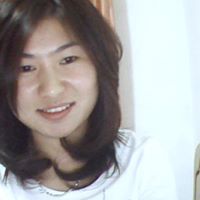Ling Zhang
age ~56
from Alpharetta, GA
- Also known as:
-
- Etal Ling Zhang
- Liang K Zhang
- Li M Zhang
- Lin G Zhang
- Ling Z Hang
- Ling Zhalg
- Ling Zhu
- Zhang Ling
Ling Zhang Phones & Addresses
- Alpharetta, GA
- Duluth, GA
- 7 Daniel Dr, Clemson, SC 29631 • 8646534532
- Pearl River, NY
- Roswell, GA
- Central, SC
- 7045 Devonhall Way, Duluth, GA 30097
Work
-
Company:MOUNT SINAI HOSPITAL
-
Address:1 Gustave L Levy Pl, New York, NY 10029
-
Phones:2124271540 2123693269
Education
-
School / High School:Albert Einstein College of Medicine of Yeshiva University2009
Languages
English
Ranks
-
Licence:New York - Delinquent
-
Date:2007
Specialities
Emergency Medicine
Lawyers & Attorneys

Ling Jia Zhang - Lawyer
view sourceLicenses:
New York - Delinquent 2007
Education:
St. Louis University School of Law
Specialties:
Advertising - 34%
Corporate / Incorporation - 33%
Communications / Media - 33%
Corporate / Incorporation - 33%
Communications / Media - 33%

Ling Zhang - Lawyer
view sourceSpecialties:
Advertising
Corporate / Incorporation
Communications / Media
Communications / Media
Advertising
Corporate / Incorporation
Communications / Media
Communications / Media
Advertising
ISLN:
924295712
Admitted:
2007
Name / Title
Company / Classification
Phones & Addresses
Owner
Ling Jieng Zhang & Ano
Operator of Apartment Building
Operator of Apartment Building
3337 103 St, Flushing, NY 11368
7184469528
7184469528
Clinical Oncology Professional
Schering-Plough Foundation Inc
Membership Organizations, Nec, Nsk
Membership Organizations, Nec, Nsk
2000 Galloping Hl Rd, Kenilworth, NJ 07033
Chairman of the Board, Chb
Zx & C Corp
Business Services at Non-Commercial Site
Business Services at Non-Commercial Site
3337 103 St, Flushing, NY 11368
MR PANDA USA, LTD
104-19/21 39TH AVENUE CONDOMINIUM MANAGEMENT, INC
104-19/21 39Th Ave, Corona, NY 11368
64-35 213 St, Oakland Gardens, NY 11364
64-35 213 St, Oakland Gardens, NY 11364
LEAVITT DAY CARE INC
Child Day Care Services
Child Day Care Services
34-51 Leavitt St, Flushing, NY 11354
3451 Leavitt St, Flushing, NY 11354
64-35 213, Flushing, NY 11354
3451 Leavitt St, Flushing, NY 11354
64-35 213, Flushing, NY 11354
SNZ INC
Nonclassifiable Establishments
Nonclassifiable Establishments
64-35 213 St, Oakland Gardens, NY 11364
6435 213 St, Flushing, NY 11364
6435 213 St, Flushing, NY 11364
GLOBAL DRY CLEAN SUPPLY INC
Whol Durable Goods
Whol Durable Goods
328 Messrole St, Brooklyn, NY 11206
328 Meserole St, Brooklyn, NY 11206
7183813336
328 Meserole St, Brooklyn, NY 11206
7183813336
Resumes

Ling Zhang West Hartford, CT
view sourceWork:
Waste Management
Sep 2013 to 2000
Vendor Management Specialist Mass Development. LLC
Branford, CT
Oct 2010 to Apr 2011
Assistant Accountant Kennesaw State University
Dec 2007 to Jun 2008
Graduate Research Assistant Graduate Research Assistantship, Kennesaw State University
Kennesaw, GA
Dec 2007 to Jun 2008
Graduate Research Assistant Wuhan University
Wuhan, CN
Jun 2003 to Jul 2005
Graduate Research Assistant Wuhan University
Wuhan, CN
Sep 2002 to Jul 2005
Graduate Student Scholarship Wuhan University
Wuhan, CN
Jun 2002 to Jul 2003
President Agricultural Bank of China
Wuhan, CN
Jun 2001 to Sep 2001
Intern
Sep 2013 to 2000
Vendor Management Specialist Mass Development. LLC
Branford, CT
Oct 2010 to Apr 2011
Assistant Accountant Kennesaw State University
Dec 2007 to Jun 2008
Graduate Research Assistant Graduate Research Assistantship, Kennesaw State University
Kennesaw, GA
Dec 2007 to Jun 2008
Graduate Research Assistant Wuhan University
Wuhan, CN
Jun 2003 to Jul 2005
Graduate Research Assistant Wuhan University
Wuhan, CN
Sep 2002 to Jul 2005
Graduate Student Scholarship Wuhan University
Wuhan, CN
Jun 2002 to Jul 2003
President Agricultural Bank of China
Wuhan, CN
Jun 2001 to Sep 2001
Intern
Education:
Kennesaw State University
Aug 2007 to Aug 2010
Master of Accounting Wuhan University
2002 to 2005
Master of Public Administration Wuhan Institute of Technology
Sep 1998 to Jul 2002
B. S. in Finance
Aug 2007 to Aug 2010
Master of Accounting Wuhan University
2002 to 2005
Master of Public Administration Wuhan Institute of Technology
Sep 1998 to Jul 2002
B. S. in Finance
Skills:
Proficient with Microsoft Office Professional, including Outlook, Word, and PowerPoint.

Ling Zhang New York, NY
view sourceWork:
Golden Touch Imports
Manhattan, NY
Oct 2011 to Feb 2014
Assistant Designer Necessary Objects
Long Island City, NY
May 2011 to Oct 2011
Assistant Designer Freelance, varied locations
Apr 2010 to May 2011 The Original Inc
Los Angeles, CA
May 2010 to Aug 2010
Assistant Designer V-fish Designs
Chicago, IL
Aug 2009 to Mar 2010
Design Intern
Manhattan, NY
Oct 2011 to Feb 2014
Assistant Designer Necessary Objects
Long Island City, NY
May 2011 to Oct 2011
Assistant Designer Freelance, varied locations
Apr 2010 to May 2011 The Original Inc
Los Angeles, CA
May 2010 to Aug 2010
Assistant Designer V-fish Designs
Chicago, IL
Aug 2009 to Mar 2010
Design Intern
Education:
The Illinois Institute of Art
Chicago, IL
Mar 2010
Bachelor of Fine Arts in Fashion Design
Chicago, IL
Mar 2010
Bachelor of Fine Arts in Fashion Design
Medicine Doctors

Dr. Ling Zhang, New York NY - MD (Doctor of Medicine)
view sourceSpecialties:
Emergency Medicine
Address:
1 Gustave L Levy Pl, New York, NY 10029
2126591660 (Phone), 2124261946 (Fax)
MOUNT SINAI HOSPITAL
1 Gustave L Levy Pl, New York, NY 10029
2124271540 (Phone), 2123693269 (Fax)
2126591660 (Phone), 2124261946 (Fax)
MOUNT SINAI HOSPITAL
1 Gustave L Levy Pl, New York, NY 10029
2124271540 (Phone), 2123693269 (Fax)
Languages:
English
Education:
Medical School
Albert Einstein College of Medicine of Yeshiva University
Graduated: 2009
Albert Einstein College of Medicine of Yeshiva University
Graduated: 2009

Ling Zhang
view sourceSpecialties:
Clinical Pathology
Work:
Moffitt Medical GroupMoffitt Cancer Center Pathology
12902 Usf Magnolia Dr, Tampa, FL 33612
8137453001 (phone), 8137458479 (fax)
12902 Usf Magnolia Dr, Tampa, FL 33612
8137453001 (phone), 8137458479 (fax)
Education:
Medical School
Fujian Med Coll, Fuzhou City, Fujian, China
Graduated: 1982
Fujian Med Coll, Fuzhou City, Fujian, China
Graduated: 1982
Languages:
English
Description:
Dr. Zhang graduated from the Fujian Med Coll, Fuzhou City, Fujian, China in 1982. She works in Tampa, FL and specializes in Clinical Pathology.

Ling Zhang
view sourceSpecialties:
Physical Medicine & Rehabilitation
Work:
Health South Rehabilitation Hospital
7930 Northaven Rd, Dallas, TX 75230
2147068200 (phone), 2147068380 (fax)
Star Health & Rehab PA
6715 Pemberton Dr, Dallas, TX 75230
2148087704 (phone), 2149871475 (fax)
7930 Northaven Rd, Dallas, TX 75230
2147068200 (phone), 2147068380 (fax)
Star Health & Rehab PA
6715 Pemberton Dr, Dallas, TX 75230
2148087704 (phone), 2149871475 (fax)
Education:
Medical School
Tongji Med Univ, Wuhan City, Hubei, China
Graduated: 1982
Tongji Med Univ, Wuhan City, Hubei, China
Graduated: 1982
Languages:
English
Description:
Dr. Zhang graduated from the Tongji Med Univ, Wuhan City, Hubei, China in 1982. She works in Dallas, TX and 1 other location and specializes in Physical Medicine & Rehabilitation.

Ling Zhang
view sourceSpecialties:
Pathology
Anatomic Pathology
Hematology
Anatomic Pathology
Hematology

Ling Zhang
view sourceSpecialties:
Physical Medicine & Rehabilitation
Hematology
Anatomic Pathology & Clinical Pathology
Clinical Pathology/Laboratory Medicine
Hematology
Anatomic Pathology & Clinical Pathology
Clinical Pathology/Laboratory Medicine
Education:
China Medical University (1982)

Ling Zhang
view sourceSpecialties:
Anesthesiology
Education:
Xian Medical University, Xian, Shaanxi (1982)
Isbn (Books And Publications)

News

Fat Beneath Skin May Ward Off Infections
view source- Ling Zhang, the first author of the paper, exposed mice to S. aureus and within hours detected a major increase in both the number and size of fat cells at the site of infection. More importantly, these fat cells produced high levels of an antimicrobial peptide (AMP) called cathelicidin antimicrobia
- Date: Jan 02, 2015
- Category: Health
- Source: Google

Fat can help keep your skin 'infection free'
view source- aureus in the fat layer of the skin, so researchers looked to see if the subcutaneous fat played a role in preventing skin infections.Ling Zhang, PhD, the first author of the paper, exposed mice to S. aureus and within hours detected a major increase in both the number and size of fat cells at the
- Date: Jan 02, 2015
- Category: Health
- Source: Google

Ling Ling Zhang
view source
Ling Zhang
view source
Xiao Ling Zhang
view source
Michelle Xin Ling Zhang
view source
Ling Hang Zhang
view source
Ling Ling Zhang
view source
Ling Ling Zhang
view source
Chia Ling Zhang
view sourceYoutube
Plaxo

zhang Ling
view source
Zhang Ling
view source中国
Classmates

cal- state university los...
view sourceGraduates:
Raj Chaugule (1991-1995),
Elizabeth MacLean (1971-1975),
Nadia Mehdi (1992-1996),
Monir Hosseiniyar (1982-1986),
Yan Ling Zhang (2000-2004)
Elizabeth MacLean (1971-1975),
Nadia Mehdi (1992-1996),
Monir Hosseiniyar (1982-1986),
Yan Ling Zhang (2000-2004)
Myspace
Flickr
Googleplus

Ling Zhang
Work:
Beijing
Education:
Malardalen

Ling Zhang
Work:
Bertelsmann - UI
Education:
Hubei academy of fine art - Design
Tagline:
你+,我+,他+google+

Ling Zhang
Education:
The One Academy - Design

Ling Zhang
Work:
Enbridge

Ling Zhang

Ling Zhang
About:
寧波に外国向けの文具...

Ling Zhang

Ling Zhang
Get Report for Ling Zhang from Alpharetta, GA, age ~56















